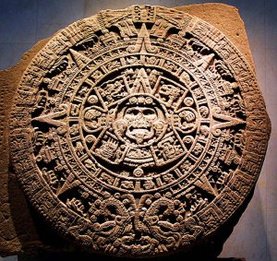Lots of attention has been paid to the Mayan calendar lately, but the Mayans actually had many scientific achievements, including astronomy, agriculture, and this week’s activity, sundials. Even Max Murphy could handle this one!
This guest post was written by one of my very favorite people, Laura Cotts. Laura has taught math, physics, and astronomy courses and labs at Southern Utah University and gave me my very first job as a TA. (Aww!) But my favorite thing Laura does is an amazing array of science activities and demonstrations each year at a local children’s jubilee. Take it away, Laura, and thank you!
What if we had no clocks and no compasses? We could use the sun to help us tell time and to find directions!
We have heard that the sun rises in the east and sets in the west. But does this mean EXACTLY east and west? And does the sun ALWAYS rise in the same place?
This is a project you can do several times during the year. The most interesting ones to compare are done in December and June, with one more in either September or March.

Here’s what you’ll need to do to make your sundial:
1. Get a large piece of cardboard or foam board and glue a golf tee, flat side down, near the center.
2. Pick a sunny Saturday or holiday, for you will want to visit your board about once an hour, all day long. Find a place that will be in the sun the whole day and tape your board down so it won’t blow away, and so it will always be sitting the same way.
3. Starting early in the morning, go out and look at the shadow of your golf tee. How long is it? In which direction is it pointing? Draw a line along the shadow, to its very end, and beside it write the time. Pay attention to the location of the sun.
4. Visit your board about once every hour and draw a line along the shadow. Has the shadow changed? If so, how? Where is the sun?
5. At the end of the day you will have many shadow lines. What pattern do they make? How did they change? When was your shadow line the shortest? The longest? Can you think why?
If your board stayed in the same place, could it help you tell the time on another day? You have made a very simple sundial!
Did your changing shadows sweep along a curve? Could this be why our round clocks and watches run “clockwise”?
If you set the board out a month or two later, will the shadows match your times again, or will there be a change? The shadows come from the sun–will the sun have changed its path? Try it!
June
It will be the most fun to try this activity again in June.
- Do you think the picture will be the same as December or March?
- How are your June shadows different from the December shadows?
- How would a March pattern differ from either? What has caused the changes?
- Does the sun always rise and set in the same places? What evidence do you have?
- Can the shadow patterns tell us about the different paths that the sun traces across the sky?
Sundials
The sundial you have made would only tell fairly accurate time for a few weeks. As the seasons change the sun’s path changes.
Sundials use the shadow of a stick, called a gnomon. To make a more accurate sundial, the gnomon should be at an angle that matches your latitude.
Directions for a simple sundial can be found here. This sundial will tell time most accurately for a mid latitude in March and September.
For more activities with the sun and the seasons, visit here or here. For very complete information on sundials try the British Sundial Society.
Thank you, Laura! I told you she was wonderful.
